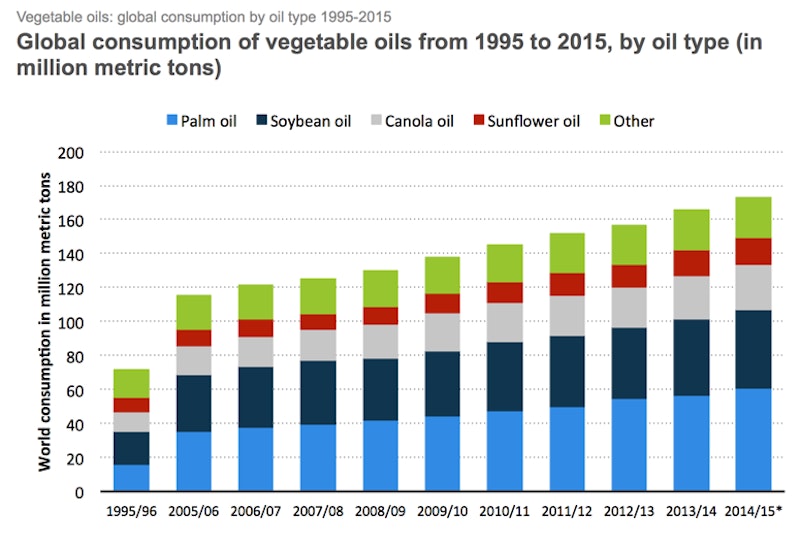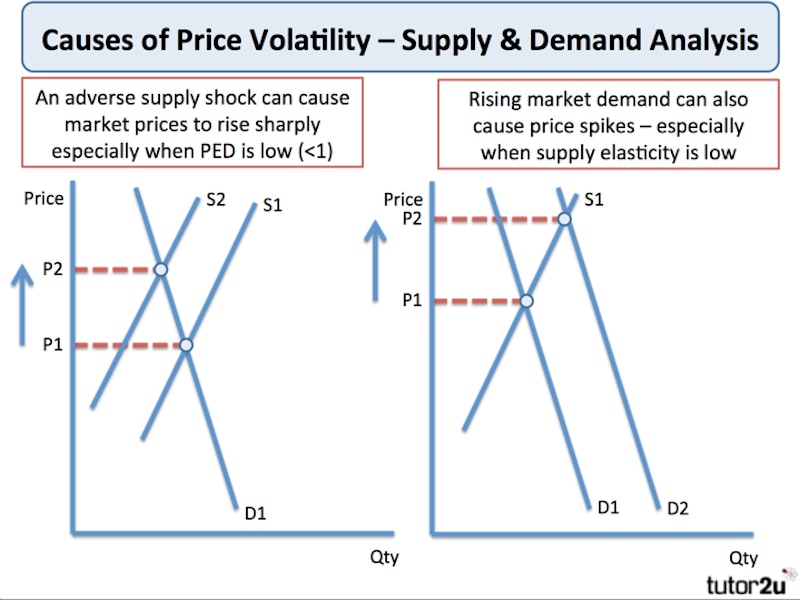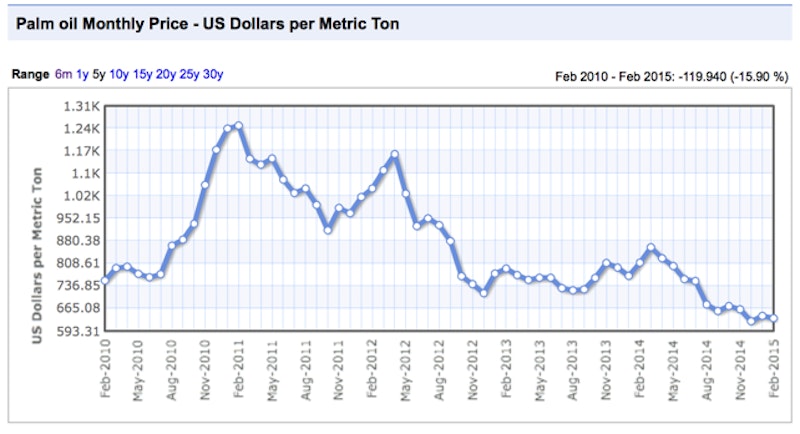Study Notes
Price Volatility - Palm Oil Production and Prices
- Level:
- AS, A-Level
- Board:
- AQA, Edexcel, OCR, IB
Last updated 22 Mar 2021
Palm oil is an edible oil used in thousands of products from cooking oil to snacks, lipsticks and transport fuels.

Global palm-oil production rose by 20% from 2010 to 2014 as world consumption increased at a similar pace. Palm oil is a substitute for other edible oils made from soy-beans and rape seed.
Leading palm-oil producer and user Indonesia has announced a subsidy for biofuel production which is likely to lead to a growing supply of Palm oil in the future as producers look to increase output and take advantage of the subsidy.

The world price of palm oil is highly volatile; in March 2014 palm-oil contracts reached a high of $795 a tonne before falling to a five-year low of $550 in September 2014. More recently, concerns about floods hitting production have caused prices to rise once again.

Recent fluctuations in the world price of palm oil are shown in the diagram below.

Revision questions:
- Explain how a subsidy for bio-fuels might affect production of palm oil in Indonesia
- To what extent is price volatility a problem for producers of palm oil and countries who produce and export large amounts of the product?
You might also like

Extreme Poverty Rate Falls Below 10%
5th October 2015

Beyond the Bike - Lesson Resource on Chinese FDI into Zambia
27th November 2015

Natural Capital - The Battle for Biodiversity
26th December 2016
Nature-Based Tourism in Laos
30th September 2020

Why market structure matters for development
3rd August 2021

